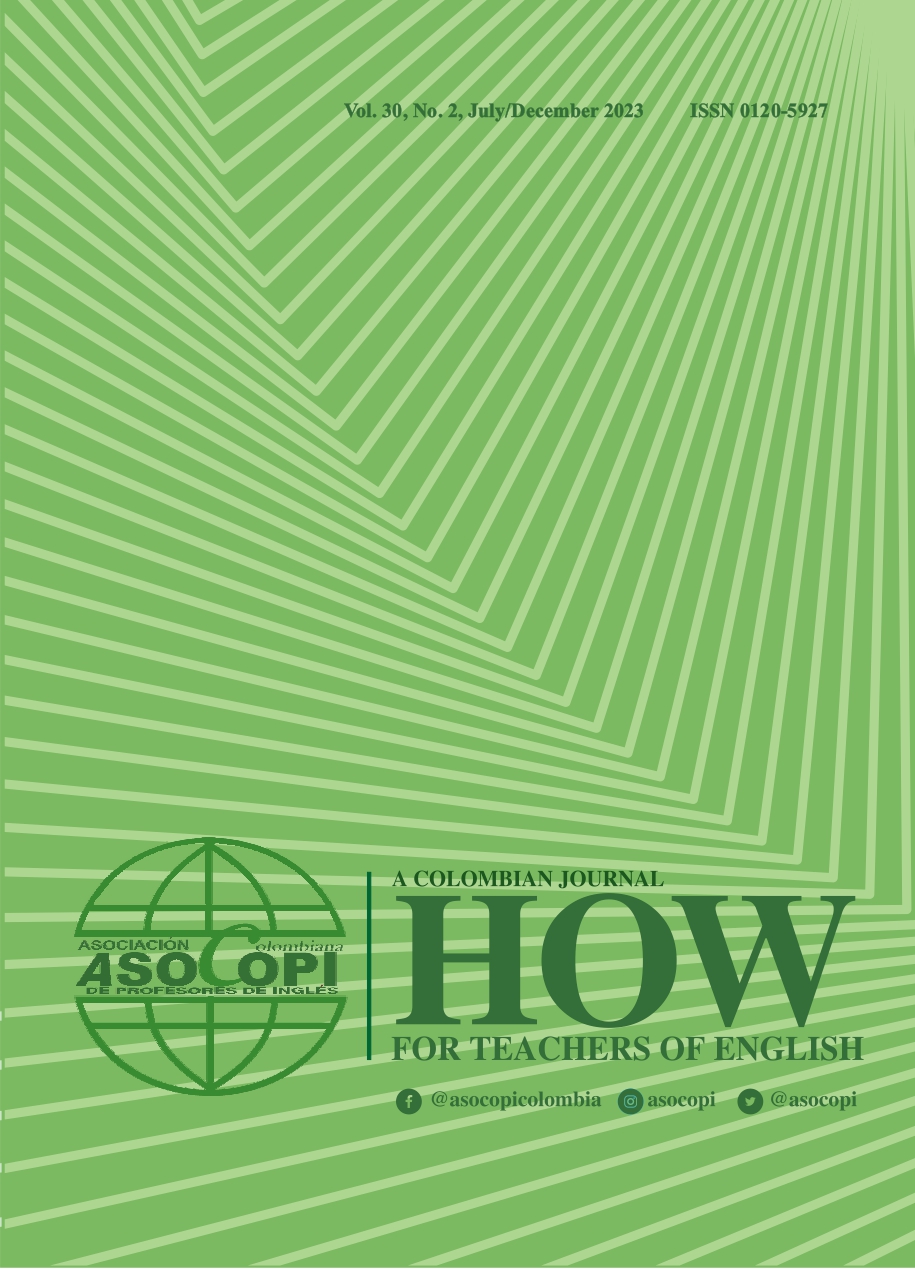Portraying Students’ Emotions in English Conversation Clubs at a Colombian University
Main Article Content
Abstract
Emotions are ubiquitous and permeate all aspects of human life, including language learning. However, little attention has been paid to emotions in the ELT curriculum, let alone in the design and implementation of conversations clubs. In this article, we share the qualitative results of a mixed-method study on students’ emotions while participating in a conversation club at a public university in Colombia. Findings show an ample range of students’ emotions, factors commonly associated with these emotions such as academic load and personal life, and the connections of emotions with students’ language learning processes. This study identifies how emotions can facilitate or interfere with language learning, highlights the importance of emotions in the development of oral skills in the context of conversation clubs, and contributes to the understanding of the language learner from a holistic perspective in the field of Applied Linguistics.
Article Details

This work is licensed under a Creative Commons Attribution-NonCommercial-NoDerivatives 4.0 International License.

This work is licensed under a Creative Commons Attribution-NonCommercial-NoDerivatives 4.0 International License.
The authors of the manuscripts accepted for publication in HOW journal are required to sign a nonexclusive license agreement allowing ASOCOPI to reproduce the full text on the Internet or in any other available source. Authors retain copyright of their manuscripts with the following restrictions: first publication is granted to ASOCOPI; nonexclusive agreements with third parties can be established as long as the original publication in the HOW journal is properly acknowledged.
References
Aaltio, L., & Heilmann, P. (2010). Case study as a methodological approach. In Mills, A. J. & Eurepos G. (Eds.) Encyclopedia of Case Study Research (1st and 2nd ed., pp. 66-76). SAGE.
American Psychological Association. (2020). APA dictionary of psychology. Retrieved September 2020, from https://dictionary.apa.org/emotion
Aragão, R. (2007). Beliefs and emotions in foreign language learning. System, 39(3), 302-313. https://doi.org/10.1016/j.system.2011.07.003
Arnold, J., & Brown, H. D. (1999). A map of the terrain. In Arnold, J. (Ed.), Affect in language learning (pp. 1-21). Cambridge University Press.
Bailey, K. M. (1991). Diary studies of classroom language learning: the doubting game and the believing game. In E. Sadtano (Ed.) Language acquisition and the second/foreign language classroom (pp. 60-102). SEAMEO Regional Language Centre.
Beseghi, M. (2018). Emotions and Autonomy in Foreign Language Learning at University. EL. LE, 7(2), 231-250. https://doi.org/10.30687/elle/2280-6792/2018/02/003
Brown, H. D. (2000). Teaching by principles. (2nd ed.). Longman.
Bygate, M. (1987). Speaking. Oxford University Press.
Creswell, J., & Guetterman, T. (2019). Educational research: Planning, conducting, and evaluating quantitative and qualitative research (6th ed.). Pearson.
Dewaele, J. (2019). When Elephants Fly: The Lift‐Off of Emotion Research in Applied Linguistics. The Modern Language Journal, 103(2), 533-536. https://doi.org/10.1111/modl.12576
Gkonou, C. (2013). A diary study on the causes of English language classroom anxiety. International Journal of English Studies, 13(1), 51-68. https://doi.org/10.6018/ijes/2013/1/134681
Gómez Rodríguez, L. F. (2017). Reading the World: Increasing English Learners’ Global Literacy through International News. Lenguaje, 45(2). https://doi.org/10.25100/lenguaje.v45i2.5274
Gualdron, E., & Castillo, E. (2018). Theater for language teaching and learning: the e theater, a holistic methodology. Profile: Issues in Teachers’ Professional Development, 20(2), 211-227. https://doi.org/10.15446/profile.v20n2.63969
Harmer, J. (2007). How to Teach English. Pearson.
Horwitz, E. K. (2010). Foreign and Second Language Anxiety. Language Teaching, 43(2), 154-167.
Horwitz, E. K., Horwitz, M. B., & Cope, J. (1986). Foreign Classroom Anxiety. The Modern Language Journal, 70(2), 125-132.
Jorquera Torres, O. C., Mendoza Zapata, J. E., & Díaz Larenas, C. H. (2017). High School Students’ Affective Reaction to English Speaking Activities. HOW, 24(2), 102-120. https://doi.org/10.19183/how.24.2.346
Kong, K. (2019). Embracing an Integrative Approach Toward Emotion in Language Teaching and Learning. The Modern Language Journal, 103(2), 539-544. https://doi.org/10.1111/modl.12578
Kramsch, C. (2009). The multilingual subject. Oxford University Press.
Krashen, S. (1982). Principles and practice in second language acquisition. Pergamon Press Inc.
Maturana, H., (1990). Emociones y Lenguaje en Educación y Política [Emotions and language in education and politics]. Ediciones Pedagógicas Chilenas.
Méndez López, M. G., & Peña Aguilar, A. (2013). Emotions as Learning Enhancers of Foreign Language Learning Motivation. Profile: Issues in Teachers’ Professional Development, 15(1), 109-124. https://revistas.unal.edu.co/index.php/profile/article/view/37872
Méndez López, M. (2022). Emotions experienced by secondary school students in English classes in Mexico. Colombian Applied Linguistics Journal, 24(2). https://doi.org/10.14483/22487085.18401
Nummenmaa, L., Hari, R., Hietanen, J., & Glerean, E. (2018). Maps of subjective feelings. Proceedings of The National Academy of Sciences, 115(37), 9198-9203. https://doi.org/10.1073/pnas.1807390115
Pavlenko, A. (2007). Autobiographic narratives as data in applied linguistics. Applied Linguistics, 28(2), 163-188. https://doi.org/10.1093/applin/amm008
Pavlenko, A. (2013) The affective turn in SLA: From 'affective factors' to 'language desire' and 'commodification of affect'. In Gabrys-Barker, D. & J. Belska (Eds.) The affective dimension in second language acquisition (pp. 13–35). Multilingual Matters.
Pekrun, R. (2014). Emotions and Learning. Educational Practices (24). The International Academy of Education.
Prior, M. (2019). Elephants in the Room: An “Affective Turn,” Or Just Feeling Our Way? The Modern Language Journal, 103(2), 516-527. https://doi.org/10.1111/modl.12573
Saldaña, J. (2013). The coding manual for qualitative researchers (2nd ed.). SAGE Publisher.
Sánchez Solarte, A. C., & Sánchez Solarte, A. (2017). From therapy to instruction: the effect of systemic strategies on the oral performance of foreign language learners. HOW, 24(2), 160-178. https://doi.org/10.19183/how.24.2.393
Sarmiento Pérez, L. B., & Sanabria Herrera, A. (2003). How teachers’ attitudes and methodologies affect students’ self-esteem as regards learning the English language. A case study with eighth graders. Profile: Issues in Teachers’ Professional Development, 4(1), 82-89. https://revistas.unal.edu.co/index.php/profile/article/view/11232
Shao, K., Pekrun, R., & Nicholson, L. (2019). Emotions in classroom language learning: What can we learn from achievement emotion research? System, 86, 1-11 https://doi.org/10.1016/j.system.2019.102121
Stake, R. E. (1995). The art of case study research. SAGE Publications.





